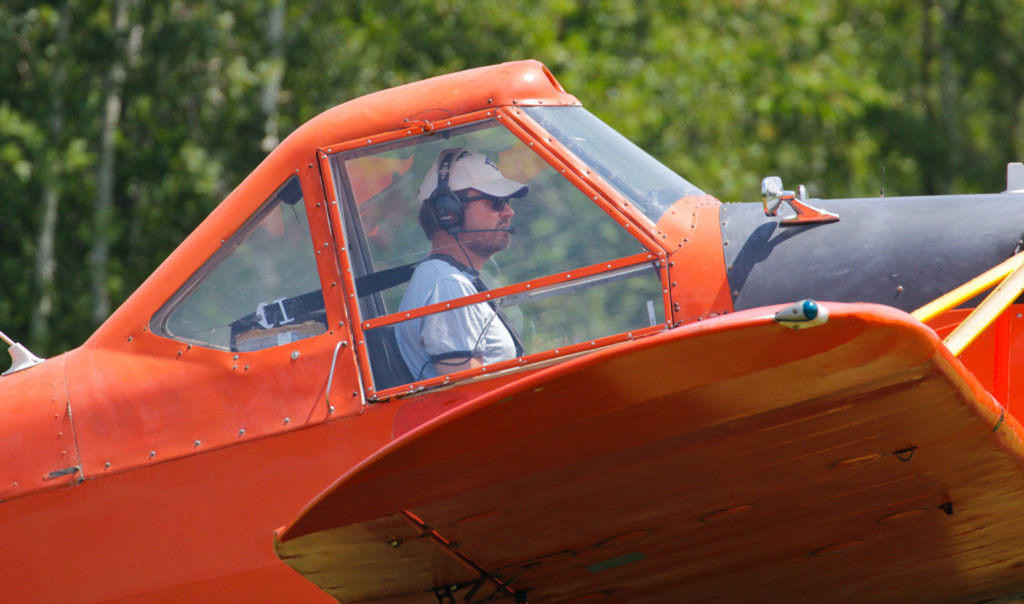Estimated reading time 5 minutes, 36 seconds.
From July 30 to Aug. 11, top glider pilots gathered at the SOSA Gliding Club in Rockton, Ont., for the 2018 Canadian National Gliding Competition. SOSA is one of the biggest and oldest gliding clubs in Canada, and it is a non-profit, volunteer-based organization with more than 150 members.

On Aug. 9, the end of the gliding competition was quickly approaching. It was a beautiful, but humid, morning. Competing pilots met at 10 a.m. for their pre-flight briefing: Safety tips were shared, flying plans were discussed and the meteorologist explained the expected weather forecast for the day.
Due to a previous abundant rainfall, it was recommended that pilots stay above the highways to find thermals, since most of the fields and forests weren’t very dry.
“The words gliding and soaring are often used as synonyms. There is a subtle difference between the two,” explained Dave Springford, one of two local pilots who won first place in the 18-metre category.
“Gliding implies that once the glider is towed into the sky, at the proper gliding altitude, it softly glides under the pull of gravity. Soaring, in contrast, involves the glider pilots defying gravity by using their knowledge and skill to find invisible rising air currents [thermals] and using them to not only arrest the descent due to gravity, but to also ascend with the thermal. With the height gained, glider pilots can translate that potential energy into distance travelled across the ground.

“All gliders, based on their design, have a maximum glide ratio or best lift-to-drag [L/D] ratio. For example, an L/D ratio of 40:1 means that for every 40 kilometres of forward travel over the ground, the glider will lose one kilometre of height. In comparison, most powered aircraft and passenger jets have an L/D ratio of about 10:1 (without engine assistance).”
Springford has been flying gliders since the age of 12 with his father. He is a former army engineer who now resides in Waterloo, not too far from the gliding club.

With the help of three tow planes, it took approximately 50 minutes to launch all the gliders into the sky. Kyle Nordman volunteered at the contest as one of the tow pilots. He currently works for WestJet and has many hours flying the Bombardier Q400 and Boeing 737, as well as the Piper Pawnee PA-25-235 (tow aircraft) at SOSA.
“Getting a large number of gliders launched in a short period of time takes a co-ordinated effort between tow pilots, glider pilots and our fantastic ground volunteers,” he said. “During the contest launch, you’ll observe a glider and tow plane taking off about every two minutes, and it’s a testament to our team here that we are able to do that safely and quickly.”
Cross-country soaring requires pilots to fly the glider outside the airspace of their home airport, and that is where the real challenge begins.
Simply stated, gliding contests are cross-country soaring races!
Here’s how the contest works: Each day, a specific cross-country task is assigned with a specified route and distance according to the weather. Each pilot is launched sequentially and 15 minutes after the last pilot is airborne, the race starts. It is now up to each pilot to decide when to start and how best to maximize their speed over the assigned task.

The gliders’ positions are recorded by GPS and at the end of the day, the pilot who completed the course at the fastest speed wins. Contests are multi-day events, with the national contest lasting 10 days.
This year, the 2018 champions were Springford, Chris Gough and Paul Parker, who were at the top of their respective classes. Twenty-six pilots from across Canada and the United States participated in this year’s Canadian National Gliding Competition.
In August 2019, SOSA will host the FAI Pan American Gliding Championship, which will host the best glider pilots from North and South America.
To learn more, please visit sosaglidingclub.com.








